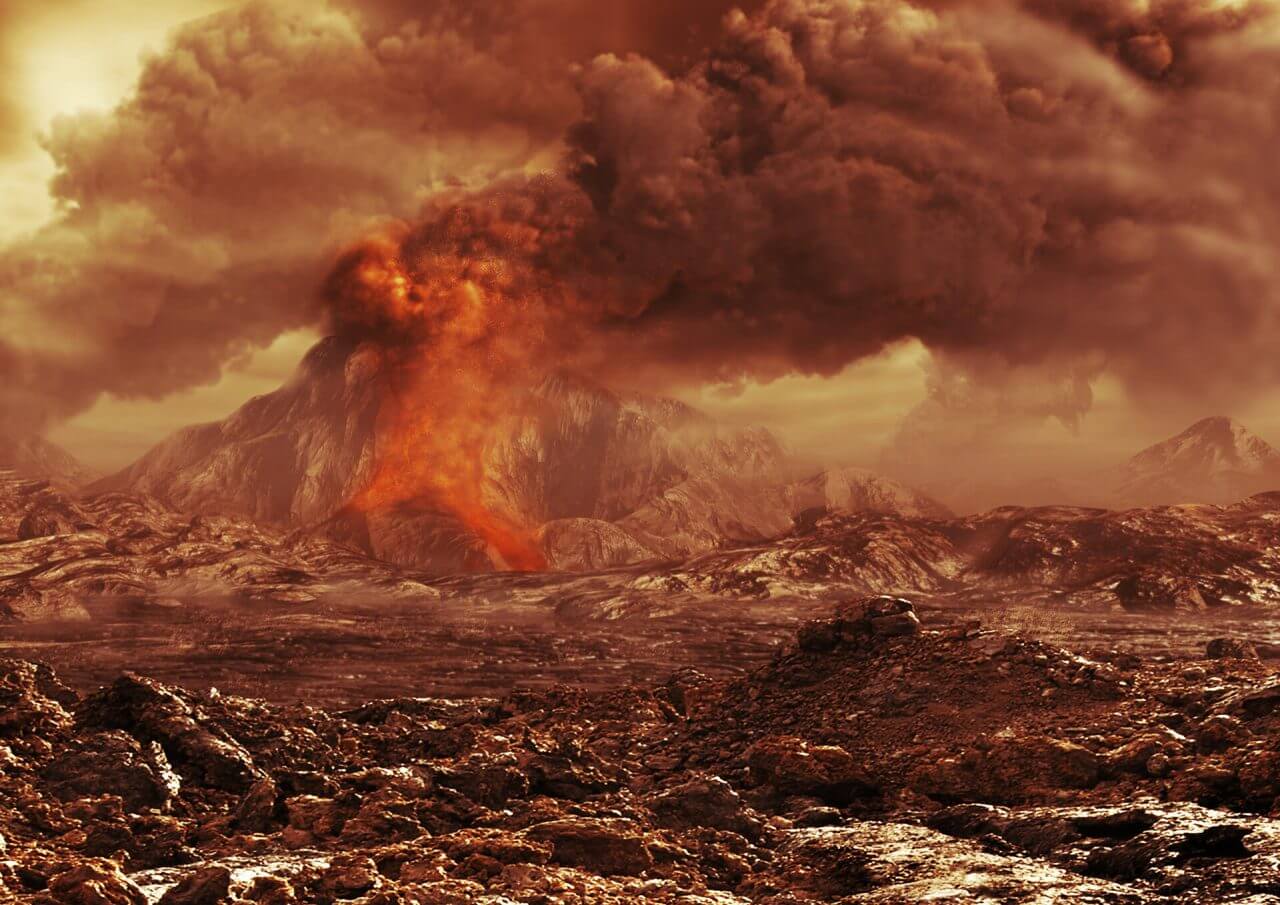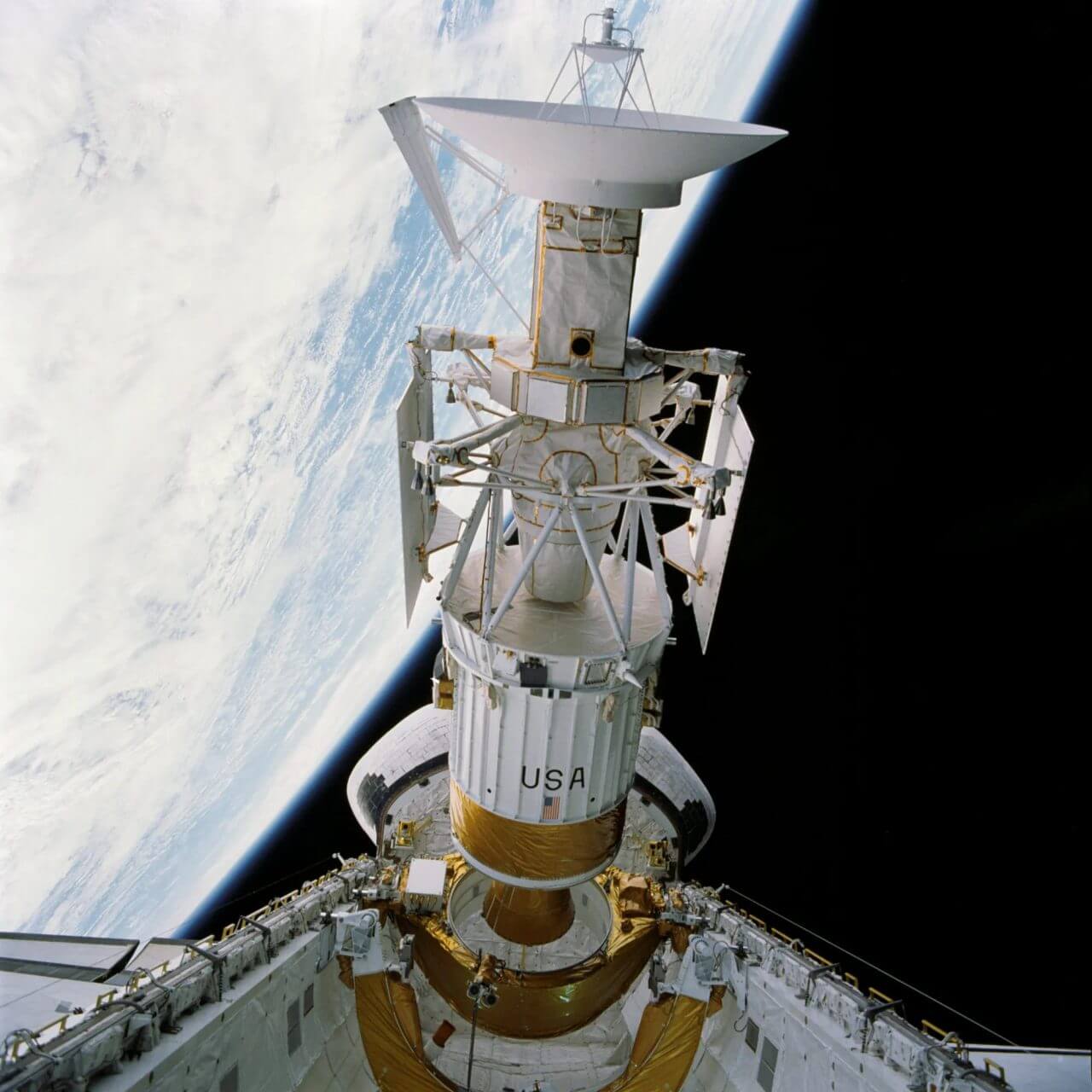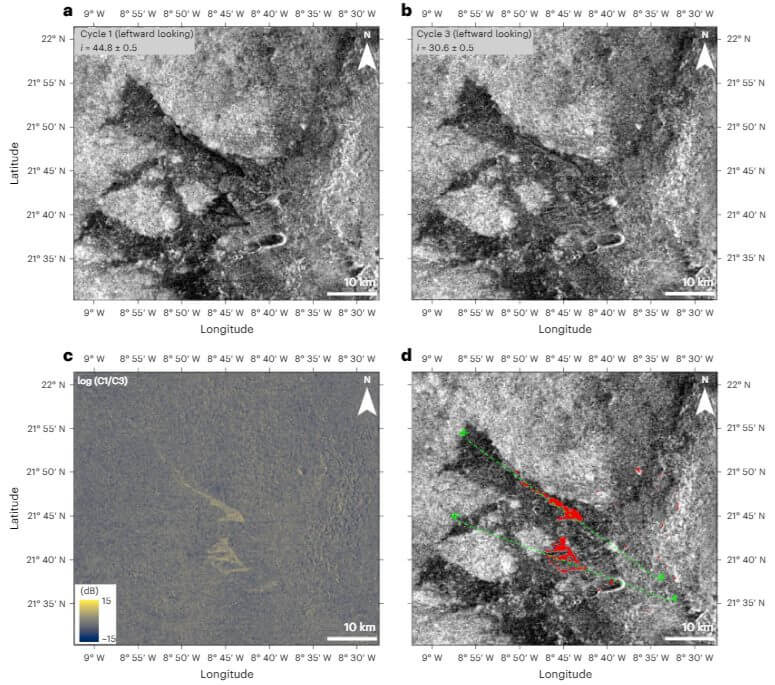It is currently causing an eruption.Active volcano“It is an extremely rare entity in the entire solar system, and has only been found outside Earth on Jupiter's moon Io. In particular, it is so similar to Earth that it is called a 'sister star.'VenusPreliminary evidence of a recent eruption was provided, but it was not conclusive.
A research team led by Davide Solcanesi and Giuseppe Mitri from the University of D'Annunzio, and Marco Mastrogiseppe from the University of Rome La Sapienza, discovered the Venus probe operated by the National Aeronautics and Space Administration (NASA) more than 30 years ago. .Magellan“Radar images to search for evidence of lava flows resulting from the eruption. Results,Changes in terrain likely caused by lava flows that flowed between 1990 and 1992 were detected in two areas.an act.
This study, along with another published just before it, shows that Venus's volcanoes were active in the recent past, and likely erupted in the 1990s, as a human timescale shows. If this result is correctVenus is the third celestial body that contains hot and active volcanoesYou will become.

■ Active volcanoes in the solar system are actually rare
Volcanoes, which spew high-temperature magma from underground to aboveground, are familiar to us. Volcanoes have been found in many non-Earth celestial bodies, such as Venus and Mars, which are rocky bodies like Earth, as well as Mercury and the Moon, where volcanic landforms and lava flows have been found.
However, it is currently breaking out.Active volcanoSuch examples are extremely rare.(※1). especially,When looking only at “hot volcanoes” that spew molten rock at high temperatures, active volcanoes have only been found on Jupiter's moon Io, excluding Earth.(※2). The reason active volcanoes are not found on other celestial bodies is that molten rock has not been preserved to this day due to a combination of reasons such as the size of the celestial bodies being too small, tidal forces, and the absence of water. It is believed that.
Venus, also known as the “sister planet” due to its similarity to Earth, is one of the celestial bodies where no active volcanoes have been found so far. More than 85,000 mountains believed to be volcanoes have been discovered.(※3)Until recently, both were thought to have ceased activity hundreds of millions of years ago.
The reason for the lack of volcanic activity on Venus, which is slightly smaller than Earth, is not well understood, but the biggest reason is thought to be a lack of water. High-temperature water has the effect of breaking the strong chemical bonds in silicates, the main component of rocks, lowering their melting point and making them easier to melt. Although magma can be generated without water, it requires higher temperatures than when water is present, making magma generation and volcanic activity more difficult. In addition, Venus has a thick crust and lacks tectonic plates, so observations have been made It indicates that not only the volcanic activity on the surface but also the internal activity is not intense.(※4).
Previous research believed that the last eruption on Venus was about 2.5 million years ago. Although this is recent enough to be considered “active” in terms of planetary science, no evidence of recent eruptions on the human time scale has been found. There is observational evidence that a volcano erupted on Mars about 53 thousand years ago, which is still ancient in comparison.
On the other hand, some research suggests that volcanic activity has occurred recently, based on analysis of trace elements present in the atmosphere. And also in 2023, and by comparing radar images,There is a volcano whose crater shape changed over several months in 1991.The results of the research have been announced. If this is true, it means that Venus may have had an eruption in 1991, but it was inconclusive.
Related articles
・Did a volcano erupt on Venus in 1991? Discovered from data of the NASA “Magellan” spacecraft (March 19, 2023)
・Did tectonic plates exist on Venus in the past? Billion years of plate tectonics may have created a thick atmosphere (November 19, 2023)
・Is volcanic activity on Mars still ongoing? Discovery of sediment from an eruption that may have occurred within the past 50,000 years (May 8, 2021)
■ New traces of lava flows discovered on Venus!


Solkanese and his team have provided new evidence that Venus's volcanoes may have erupted in the 1990s. This study and the 2023 study mentioned in the previous chapter are based on the Venus probe launched by NASA.Magellan''Depends on the radar image. Venus' thick atmosphere and clouds absorb and reflect light of various wavelengths, making the surface nearly impossible to see. However, since radio waves pass through the atmosphere and are reflected (scattered) by the Earth, it is possible to image the Earth's surface using radar. Furthermore, the composition of materials, such as that of rocks, can be determined to some extent by the intensity of reflections of radio waves.
However, this type of research is difficult, as evidenced by the fact that the research was not conducted until more than 30 years after Magellan began operating. First of all, since radar images have poor image quality compared to other electromagnetic waves and provide less information, it is not possible to perform a high-resolution search. Radars installed on spacecraft 30 years ago have lower performance than modern radars. In addition, even if the data is taken from the same area, the angle at which the radio waves were irradiated varies depending on when the image was taken. As a result, the properties of the reflected radio waves change, so even if you photograph the exact same terrain, it will appear as a different radar image.
Therefore, in order to conduct comparative research, it is necessary to make corrections to remove these differences. Performing this on a huge amount of monitoring data is a time-consuming task.
![[▲ الشكل 3: تضاريس جبل شيف المعاد إنشاؤها من صور رادار ماجلان. يتم التأكيد على اتجاه الارتفاع أكثر من الاتجاه الأفقي لتسهيل رؤية التضاريس. (الائتمان: ناسا ومختبر الدفع النفاث-معهد كاليفورنيا للتكنولوجيا)]](https://sorae.info/wp-content/uploads/2024/06/2024-06-04-Venus_active_volcano-03.jpg)
![[▲ الشكل 3: تضاريس جبل شيف المُعاد إنشاؤها من صور رادار ماجلان. يتم التأكيد على اتجاه الارتفاع أكثر من الاتجاه الأفقي لتسهيل رؤية التضاريس. (الائتمان: ناسا ومختبر الدفع النفاث-معهد كاليفورنيا للتكنولوجيا)]](https://sorae.info/wp-content/uploads/2024/06/2024-06-04-Venus_active_volcano-03.jpg)
However, Solkanese and his colleagues explored areas where active volcanoes might be present, and finally succeeded in discovering a promising candidate. It is a volcano with a height of 2200 m.Mount Chef(Save Mons), where you can see many volcanoes.Niobe plains(Niobi Planitia) Western Region. By comparing radar images taken in 1990 and 1992, we found areas where the strength of radio waves was increasing. This may be due to the presence of materials that amplify the power of radio waves between 1990 and 1992, such as fresh rock derived from solidified lava flows that erupted.
However, this alone cannot be considered evidence of a volcanic eruption, as newly deposited sand dunes as a result of the influence of winds and the influence of the atmosphere, which interferes with radio waves, are also considered a reason for increasing the strength of radio waves. Therefore, Solkanese et al modeled the arrangement and angle of the slope based on topographic data and investigated whether this was consistent with the fact that it was a lava flow. Results,The newly formed landforms were likely formed by lava flows flowing down the slope, and are unlikely to have formed for other reasons.I understand that.


The new lava flow is believed to have covered the ground with an average thickness of 3 to 20 metres. The total amount of magma ejected was estimated at 0.09 to 0.6 km3 (90 million to 600 million m3) at Mount Shiv, and 0.135 to 0.9 km3. (135 million to 900 million cubic metres) in the Niobe Plain(※5).
■Venus is likely to become the third celestial body with active volcanoes.
This research, along with the 2023 research,It is very likely that there is an active volcano on Venus.It shows that.Venus is the third celestial body to contain active, hot volcanoes, after Earth and Io.Looks like it will be so. If we can capture the moment of the explosion, we should be able to learn more.
NASA currently aims to launch the VERITAS Venus probe, whose main mission is to create a more accurate map of Venus. The topographic data obtained by Veritas, which are much more accurate than Magellan's data, will be used not only to evaluate whether the traces of active volcanoes estimated in this study are correct, but also to identify new active volcanoes that cannot be detected by Magellan. This will also capture traces
■ Notes
*1…An active volcano on Earth is defined as one that has erupted within the past 10,000 years. There is no definition for celestial bodies other than Earth, but in most cases they are viewed on roughly the same time scale.
*2…When adding “ice volcanoes” that spew water or low-temperature liquids, the celestial bodies that were observed at the moment of the eruption include Jupiter’s moon “Europe” and Saturn’s moon, which spews water “Enceladus” and “Triton.” A moon of Neptune will be added, spewing liquid nitrogen. However, Europa and Enceladus are often described as geysers rather than cryovolcanoes, because they are the product of eruptions from subterranean oceans (inland seas). In addition, there are several other icy bodies that have volcano-like terrain, and are thought to contain cryovolcanoes involved in maintaining the thin atmosphere.
*3…For comparison, it is estimated that there are more than a million volcanoes on Earth. However, most of them are underwater volcanoes and are inactive. It is estimated that there are about 1,500 active volcanoes on land or on relatively shallow sea floors, and about 5,000 on ocean ridges or deep sea floors.
*4…One of the reasons is the lack of tidal force due to the lack of satellites. However, tidal forces reach a maximum when there are many very large celestial bodies and their orbits are far apart, so even if Venus has a large moon, volcanic activity may not be as intense. For reference, the tidal energy that the Earth receives from the Moon amounts to about 6% of geothermal energy, and the main energy sources for the Earth’s volcanic activity are the heat of the decay of radioactive isotopes and the gravitational energy that was transformed during the formation of the Earth.
*5…For comparison, the Nishinoshima eruption from 2013 to 2015 is estimated to have ejected a total amount of 0.16 cubic kilometers (160 million cubic metres) of magma.
source
Text / Riri Ayaka Editing / sorae editorial department

“Travel maven. Beer expert. Subtly charming alcohol fan. Internet junkie. Avid bacon scholar.”






More Stories
Enjoy a hot cigarette while looking at whales and tropical fish under the sea ⁉︎ “Ploom Dive” is an amazing spatial video experience using Apple Vision Pro
Apple Watch now supports sleep apnea, watchOS 11 released – Impress Watch
ASCII.jp: New macOS Release! macOS Sequoia 15 Can Display Your iPhone Screen on Your Mac!